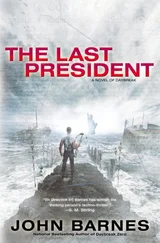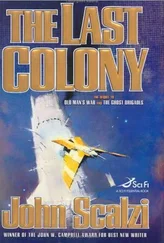Cast your mind back.
Refresh your memory if necessary: go to Nexis, go to microfiche.
Try to locate the most interesting news stories of the period in question.
Scroll past any stories that led or even made the evening news.
Move down instead until you locate the kind of two-inch wire story that tended to appear just under the page-fourteen continuation of the page-one story on congressional response to the report of the Kissinger Commission, say, or opposite the page-nineteen continuation of the page-one story about the federal court ruling upholding investigation of possible violations of the Neutrality Act.
The kind of two-inch wire story that had to do with chartered aircraft of uncertain ownership that did or did not leave one or another southern airport loaded with one or another kind of cargo.
Many manifests were eventually analyzed by those who followed such stories.
Many personnel records were eventually accessed.
Many charts were eventually drawn detailing the ways in which the spectral companies with the high-concept names (Amalgamated Commercial Enterprises Inc., Defex S.A., Energy Resources International) tended to interlock.
These two-inch aircraft stories were not always identical. In some stories the aircraft in question was reported not to have left one or another southern airport but to have crashed in Georgia or experienced mechanical difficulties in Texas or been seized in the Bahamas in relation to one or another narcotics investigation. Nor was the cargo in these stories always identical: inspection of the cargo revealed in some cases an unspecified number of reconditioned Soviet AK-47s, in other cases unspecified numbers of M67 fragmentation grenades, AR-15s, M-60s, RPG-7 rocket launchers, boxes of ammo, pallets of POMZ-2 fragmentation mines, British Aerospace L-9 antitank mines, Chinese Type 72A and Italian Valmara 69 antipersonnel mines.
69s.
Epperson had floated a figure of three dollars per for 69s and now he was claiming the market had dropped to two per.
I’m not sure I know what business Epperson is in.
Christ, what business are they all in.
Some people in Washington said that the flights described in these stories were not occurring, other people in Washington (more careful people in Washington, more specific people in Washington, people in Washington who did not intend to perjure themselves when the hearings rolled in) said that the flights could not be occurring, or could only be occurring, if indeed they were occurring, outside the range of possible knowledge.
I myself learned to be specific during this period.
I myself learned to be careful.
I myself learned the art of the conditional.
I recall asking Treat Morrison, during the course of my preliminary interviews with him at his office in Washington, if in fact, to his knowledge, anyone in the United States government could have knowledge that one or more such flights could be supplying arms to the so-called contra forces for the purpose of overthrowing the Sandinista government in Nicaragua.
There had been a silence.
Treat Morrison had picked up a pen and put it down.
I flattered myself that I was on the edge of something revelatory.
“To the extent that the area in question touches on the lake,” Treat Morrison said, “and to the extent that the lake has been historically construed as our lake, it goes without saying that we could have an interest. However.”
Again he fell silent.
I waited.
We had gotten as far as claiming the Caribbean as our lake, our sea, mare nostrum.
“However,” Treat Morrison repeated.
I debated with myself whether I would accept an off-the-record or not-for-attribution stipulation.
“We don’t track that kind of activity,” Treat Morrison said then.
One of those flights that no one was tracking lifted off from Fort Lauderdale-Hollywood International Airport at one-thirty on the morning of June 26 1984. The aircraft was a Lockheed L-100. The official documents filed by the pilot showed a crew of five, two passengers, a cargo of assorted auto parts, and the destination San José, Costa Rica.
The U.S. Customs official who certified the manifest did not elect to physically inspect the cargo.
The plane did not land in San José, Costa Rica.
The plane had no reason to land in San José, Costa Rica, because an alternative infrastructure was already in place: the eight-thousand-foot runways laid by the 46th Combat Engineers during the aftermath of the Big Pine II maneuvers were already in place. The radar sites were in place. The water purification and delivery systems were in place. “You got yourself a regular little piece of U.S.A. here,” the pilot of the Lockheed L-100 said to Elena McMahon as they waited on the dry grass off the runway while the cargo was unloaded.
“Actually I’ll be going right back.” She felt a sudden need to distance herself from whatever was going on here. “I mean I left my car at the airport.”
“Long-term parking I hope,” the pilot said.
What was also in place was the deal.
We don’t track that kind of activity.
No comment. Thank you. Goodbye.
The persona of “the writer” does not attract me. As a way of being it has its flat sides. Nor am I comfortable around the literary life: its traditional dramatic line (the romance of solitude, of interior struggle, of the lone seeker after truth) came to seem early on a trying conceit. I lost patience somewhat later with the conventions of the craft, with exposition, with transitions, with the development and revelation of “character.” To this point I recall my daughter’s resistance when asked, in the eighth grade at the Westlake School for Girls in Los Angeles, to write an “autobiographical” essay (your life, age thirteen, thesis, illustration, summary, just try it, no more than two double-spaced pages neatly typed please) on whatever event or individual or experience had “most changed” her life. I mentioned a few of the applicable perennials (trip to Europe, volunteer job in hospital, teacher she didn’t like because he made her work too hard and then it turned out to be worth it), she, less facile, less careful, more sentient, mentioned the death of her best friend in fourth grade.
Yes, I said, ashamed. Better. You have it.
“Not really,” she said.
Why not, I said.
“Because it didn’t actually change my life. I mean I cried, I was sad, I wrote a lot about it in my diary, yes, but what changed?”
I recall explaining that “change” was merely the convention at hand: I said that while it was true that the telling of a life tended to falsify it, gave it a form it did not intrinsically possess, this was just a fact of writing things down, something we all accepted.
I realized as I was saying this that I no longer did.
I realized that I was increasingly interested only in the technical, in how to lay down the AM-2 aluminum matting for the runway, in whether or not parallel taxiways and high-speed turnoffs must be provided, in whether an eight-thousand-foot runway requires sixty thousand square yards of operational apron or only forty thousand. If the AM-2 is laid directly over laterite instead of over plastic membrane seal, how long would we have before base failure results? (How long would we need before base failure results was another question altogether, one I left to the Treat Morrisons of this world.) How large a base camp will a fifteen-hundred-kilowatt generator service? In the absence of high-capacity deep wells, can water be effectively treated with tactical erdlators? I give you Friedrich Wilhelm Nietzsche, 1844–1900: “When man does not have firm, calm lines on the horizon of his life — mountain and forest lines, as it were — then man’s most inner will becomes agitated, preoccupied and wistful.”
Читать дальше












